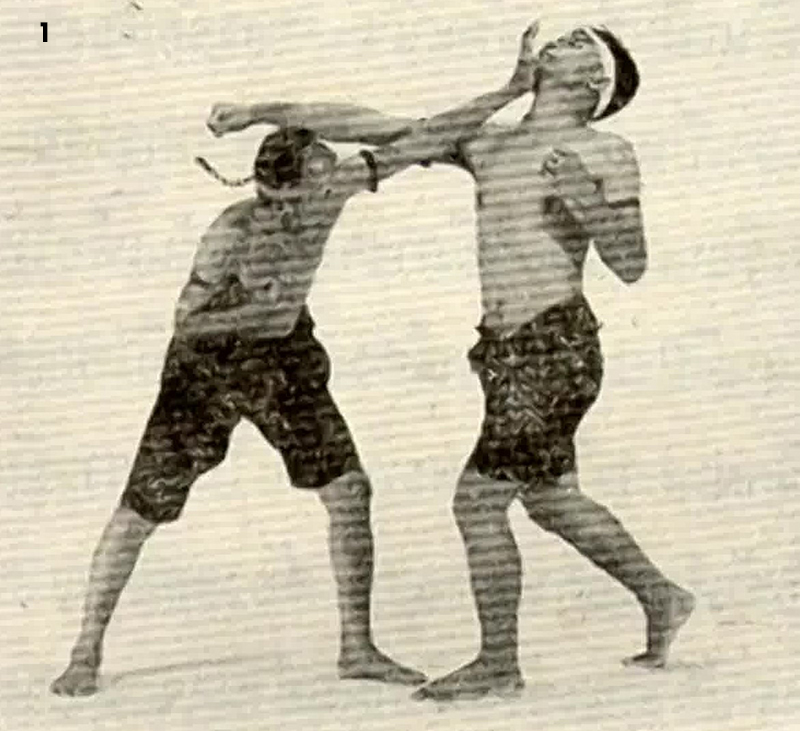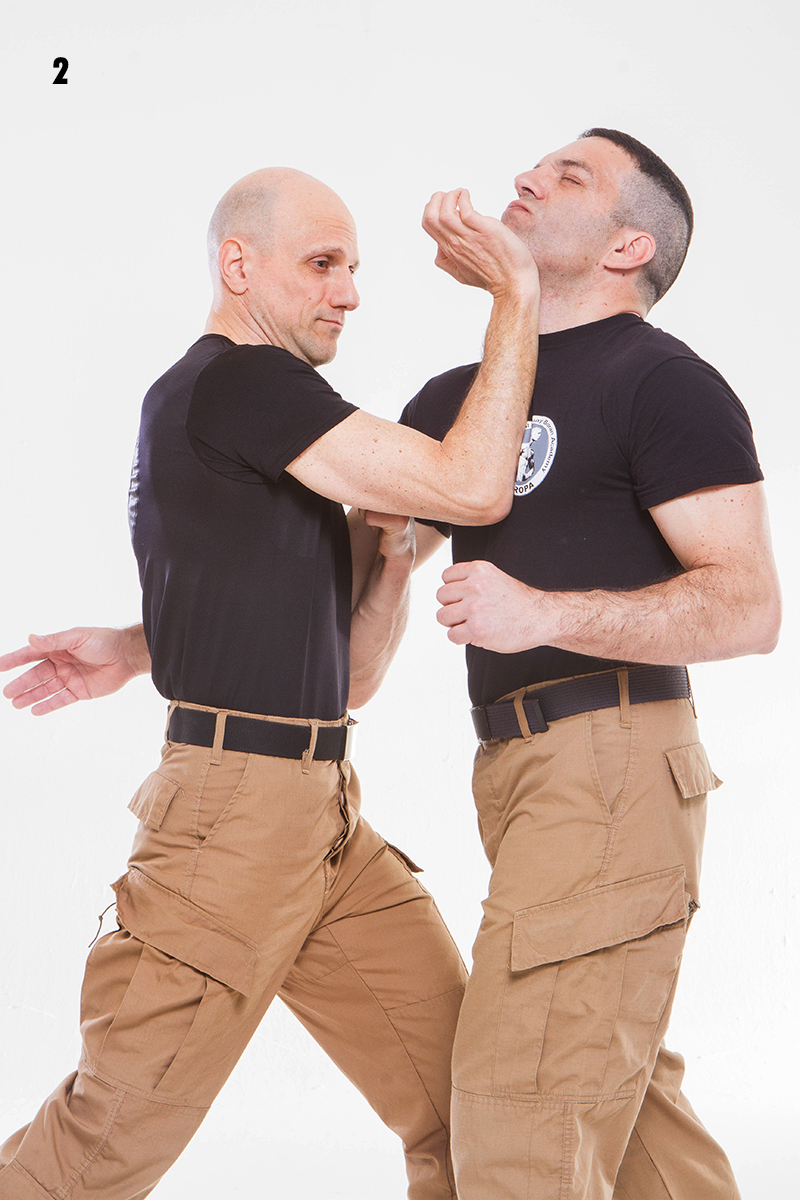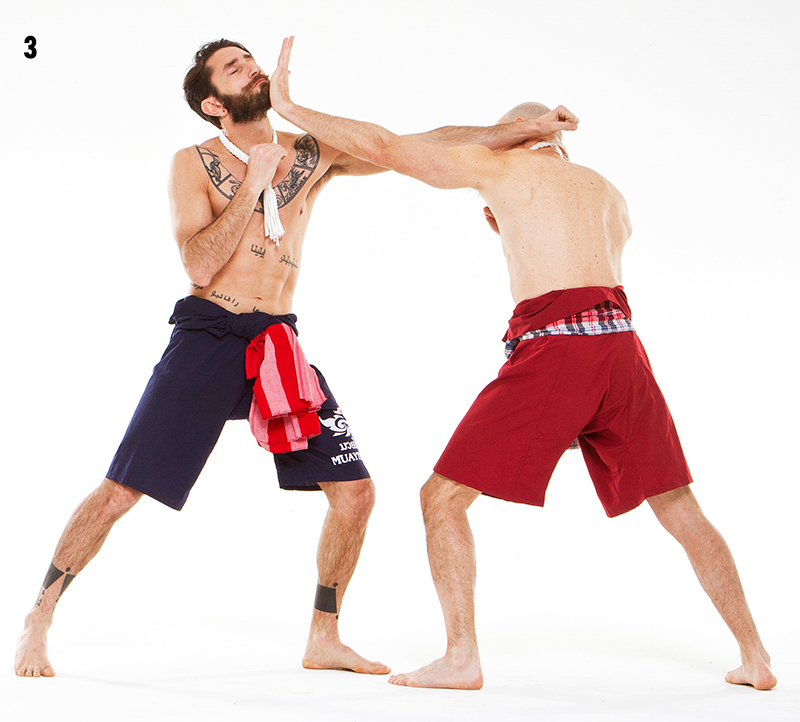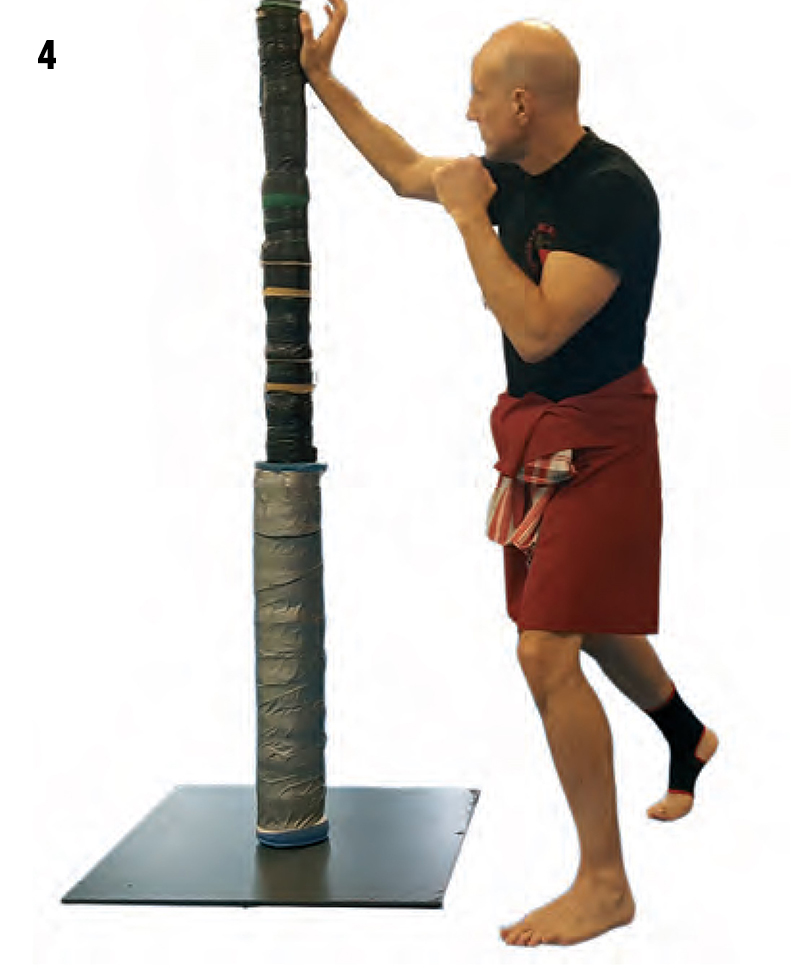
The destructive heel-of- the-hand blow.
The palm is traditionally considered by many martial arts’ exponents as the ideal body weapon, more flexible and at the same time more resistant than the closed fist. Muay Boran Nine Body weapons are fists, legs, knees, elbows and head. However, in this case the word “fist” has a broader meaning than just “closed fist”: it actually refers to the many possible uses of the open and closed hands in fighting. As a matter of fact, the use of the palm of the hand (Fa Meu, ฝ่ามือ ) in combat has a long tradition in Siamese martial arts. (image 1: Arjarn Tonglor Yaleh)
While conditioning of knuckles requires a lengthy process under the supervision of a true Master (if serious injuries and a loss of hand functionality are to be avoided ), the palms, and in particular the so-called “heel of the hand” (the area of the palm closer to the wrist ), are naturally very strong body parts; moreover, if properly trained, heel of the hands blows are able to develop a deadly power.
Furthermore, the heel of the hands are able to deliver knock-out blows from every distance: these techniques are equally efficient at short range and long range. Let’s see how they work more in detail.
• Situation 1: short distance.
The “Chin Jab”, is an explosive short upward palm blow aimed at the opponent’s chin. This vicious attack is a typical application of the heel of the hand blow at a short distance from the opponent: it is one of the most effective weapons for close range combat. Due to its lethal efficiency, this was the basic technique taught to the British Commandos during World War II to quickly dispatch an enemy with bare hands. To correctly deliver this blow put your body mass behind the strike and explode violently upward. The uppercut strike brings your palm in contact with the opponent’s chin, pushing it up violently. This action produces an abrupt backward thrust of the head, causing a devastating effect on the cervical spine (whiplash effect). In delivering the blow, keep the fingers spread. This will help you to keep the hand contracted for a harder impact. Furthermore, after striking the chin with the palm, the action may be continued by attacking the eyes with the fingertips, thus easily causing a head tilt and eventually paving the way to a backward throw (see opening photo of this article). Moreover, a common and extremely effective combination of attacks from a very short range (grappling range) involves the use of the heel of the hand blow and the groin knee strike. The knee can strike first in order to bring the chin of a tall opponent down and forward where the palm can more easily reach its target. Otherwise, the chin blow can be delivered first, thus completely off-balancing the opponent, opening the way to the following knee attack. (image 2)
Situation 2: long distance.
From a distance, the heel of the hand blow is still lethal if properly applied. In this case the attack follows a straight forward path to the target. Step forward with your front foot as if you were falling down and strike along a diagonal upward line. In Muay Lert Rit the kind of energy expressed by the powerful combination of a forward step and simultaneous straight blow is called “the poisoned arrow”. If the heel of the hand hits the base of the opponent’s nose with accuracy and with the explosive energy of an arrow, it can produce major injuries and may potentially cause fractures and severe bleeding. In fact, the chief points of attack for this application are the base or bridge of the nose, in case of head-on blows. On the other hand, if the strike is executed from an angle, the jaw, ear or temple are the preferred targets. In case of head-on collision, the whiplash effect on the cervical vertebrae described in the application of the short uppercut blow may also occur but to a lesser extent. (image 3)
Heel of the hands blows are also extremely practical for street fighting applications even if the executor is not a seasoned martial artist. One of the main reasons is self -protection. In fact, except for experienced Lert Rit practitioners, hitting with a bareknuckle fist is not easy to do, especially if the striker wants to knock his opponent out without injuring his hands. In fact, for untrained people it is very easy to hurt their unprotected fist in the chaos of a street confrontation. However, even if the striker hasn’t previously conditioned his hands, it is nevertheless difficult to hurt the heel of the hand no matter how hard he hits. As a result the risk for injury to yourself is reduced to a minimum when striking with a properly executed heel of the hand blow (instead of using the knuckles of a closed fist).
To sum up, heel of the hand blows can knock an opponent out, seriously harm him and also protect your knuckles from unnecessary damage.
However, even if the palm is naturally apt at delivering hard blows without previous hand conditioning, the efficiency of heel of the hand blows can be enhanced by a proper hardening program. In fact, special training methods make the palm tougher and more durable. The main tool used by IMBA Lert Rit stylists for palm conditioning is the iron post. When you start training on the post you should hit the tool keeping the fingers pointing up and the base of the palm pushed forward. You can throw long straight blows or a short upward strikes.
To begin, stand before the post with your feet parallel and with your hands in front of your body in the basic palm to palm position. Strike forward with your right palm impacting with the heel of the hand against the upper portion of the post. Pull your right hand back and strike with your left palm. Exhale as you strike. The blows follow a diagonal upward path to the target. Each strike must be executed with the uttermost correct form, employing a rotation of hips and shoulders, avoiding any unnecessary muscle tension. Repeat the blows until the desired number of repetitions is reached. If you want to train your short range strikes, get closer to the pole and strike with short uppercuts, keeping your arm bent (image 4). A final warning: practicing bone conditioning exercises on the iron post for lengthy periods without the supervision of a trained instructor may cause serious damage.
For more applications of the heel-of-the-hand blow:
IMBA Lert Rit official guide.





